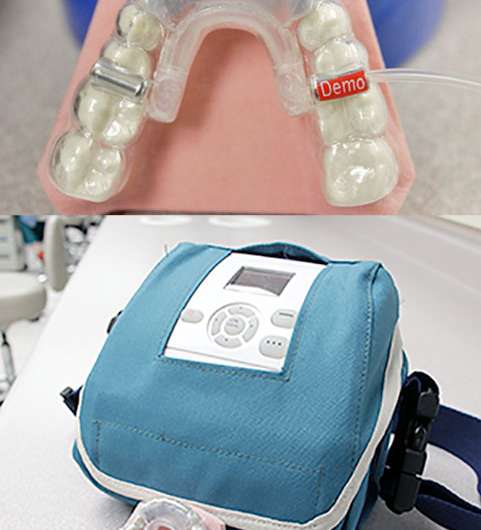New braces clinical trial sheds metal brackets

The use of terms like "metal mouth" and "brace face" may soon be a thing of the past.
A new clinical trial at the University of Alabama at Birmingham School of Dentistry is recruiting participants for a new braces treatment that uses pulsating air to correct crowding in teeth.
"We've had a big shift in the way we care for patients who need braces," said Professor Chung H. Kau, Ph.D., chair of the Department of Orthodontics.
The treatment, called Aerodentis, applies pulsating air through a mouthpiece connected to a small console to move teeth gradually into the desired position and occlusion.
Although it is not FDA-approved yet, Kau believes that, if Aerodentis is proven to work, it will be only a matter of time before it catches on in the United States.
Interested participants undergo a screening process to see if their front teeth are crowded, either by growth and development or as a result of wearing traditional braces. Once approved, participants are randomized and are prescribed either a clear aligner or the Aerodentis treatment.
With the Aerodentis treatment, participants are given a custom-made thermo-plastic mold that fits over the teeth with an integrated inflatable silicon balloon. The mouthpiece is specifically designed for each participant and produced from orthodontic sheets by vacuum-forming technology using CAD/CAM manufacturing and 3-D imaging. The mouthpiece is connected by a small, flexible tube to a control console with a user-friendly interface. It houses the electronics, air pump system, and pressure sensor that measures and controls the electronic pulsating force level in real time. An easy-to-use smart card enables patient compliance monitoring. Participants are asked to wear the Aerodentis system for a minimum of 10 hours each day; however, the 10 hours do not have to be continuous. The total duration of the trial is 15 months.
"Teeth will move when you give them a light force and create space," Kau said. "We're very excited to use this treatment."
The trial is not completely free, but eligible participants will receive X-rays, monthly checkups and an orthodontic appliance at a discounted price.
UAB is the only school in the United States using the device in a clinical trial.
Requirements for the trial:
- Must have all adult teeth, lost all baby teeth
- Between the ages of 8 and 60
- Crowding of the front teeth, upper or lower
- Good oral hygiene
- Not currently taking any investigational drug or osteoporosis drugs
- Not currently pregnant or planning to become pregnant in the next 15 months
More information: For more information, please contact Sarah Choi with UAB Orthodontics at (205) 732-4693 or email sjturner@uab.edu.



















